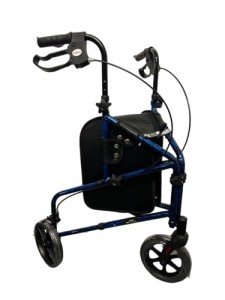
3
MayWhy Walking Aids Will Be Your Next Big Obsession
Walking Aids: Enhancing Mobility and Independence
Walking aids are important tools designed to assist individuals with mobility difficulties, enabling them to move freely and conveniently. These devices can significantly boost autonomy, enhance posture, lower the risk of falls, and increase overall lifestyle. This short article digs into numerous kinds of walking aids, their benefits, considerations for use, and tips for choosing the right aid. In addition, a comprehensive FAQ area addresses typical queries about walking aids.

Kinds Of Walking Aids
Walking aids come in different types to deal with various requirements and preferences. Below is a categorized list of the most commonly used walking aids:
1. Walking canes
- Basic Canes: A single straight walking stick for fundamental support.
- Quad Canes: Canes with a four-pronged base for increased stability.
2. Walkers
- Requirement Walkers: Frame-like devices that offer support on all sides, terrific for those with restricted strength.
- Rolling Walkers (Rollators): Equipped with wheels, these enable users to stroll with less effort and come with seats for resting.
3. Crutches
- Axillary Crutches: Used under the arms; ideal for short-lived mobility issues.
- Lower Arm Crutches (Lofstrand Crutches): Designed for long-lasting use, mymobilityscooters.Uk they require grip strength and are lighter than axillary crutches.
4. Wheelchairs
- Manual Wheelchairs: Require user effort to move, providing versatility and independence.
- Electric Wheelchairs: Battery-powered alternatives suitable for users with limited arm strength.
Benefits of Walking Aids
Walking aids offer many benefits that contribute to improved mobility, safety, and independence. Some crucial benefits include:
- Increased Stability: Walking aids supply extra points of contact with the ground, decreasing the risk of falls.
- Enhanced Mobility: They allow movement over greater distances, allowing people to engage in social activities and day-to-day jobs.
- Pain Reduction: Properly fitted walking aids can reduce pressure on joints and lower pain connected with different medical conditions.
- Improved Confidence: Using a walking aid can improve a person's confidence, folding rollator encouraging them to explore their environment without worry.
- Posture Support: Aids assist preserve proper alignment and posture, decreasing stress on the back and hips.
Factors To Consider When Choosing Walking Aids
Choosing the best walking aid is essential Rollator For Travel safety and efficiency. Here are some elements to consider:
1. Specific Needs
- Examine the level of support needed for mobility.
- Consider whether short-lived or long-lasting support is essential.
2. Environment
- Examine the surface and surface areas (Indoor Walker vs. outdoor) where the aid will be used.
- Guarantee that the walking aid appropriates for stairs, ramps, or uneven surfaces.
3. Weight and Portability
- Examine the weight of the walking aid and if it can be carried quickly.
- Lightweight options are more effective for those who may need to raise or stow the aid regularly.
4. Comfort and Fit
- Ensure the walking aid is adjustable and fits the user's height.
- Consider grips, armrests, or seats that provide comfort for extended use.
5. Spending plan
- Identify a spending plan for the walking aid while considering the quality and functions required for the user's safety and comfort.
FAQs About Walking Aids
1. Who should use walking aids?
Walking aids are ideal for individuals recovering from surgery, those with persistent pain, seniors experiencing balance concerns, or anybody with a mobility difficulty.
2. How do I pick the best height for a walking aid?
When standing directly with excellent posture, the top of the cane or walker should line up with the wrist bone. A healthcare professional can offer assistance during fitting.
3. Can I use a Pepe 4-Wheel Rollator Walker with Seat on stairs?
While it's normally not safe to use a walker on stairs, some walkers are created specifically for stairs with features that enhance stability. Always seek advice from a physical therapist for personalized suggestions.
4. How can I keep my walking aid?
Routinely check for loose parts, mymobilityscooters wear and tear, and clean the gadget according to the manufacturer's guidelines to guarantee safety and durability.
5. Do walking aids help with balance?
Yes, walking aids can provide the needed assistance and stability, helping to avoid falls and help with well balanced movement.
Walking aids are invaluable devices that empower individuals with mobility difficulties to maintain self-reliance and enhance their lifestyle. By understanding the different types of walking aids, their benefits, and necessary factors to consider for selection, users can make educated decisions tailored to their needs. Whether for short-lived support or long-lasting use, the right walking aid can transform everyday routines and enhance general wellness.
| Type of Walking Aid | Features | Best For |
|---|---|---|
| Walking canes | Single or quad bases | Moderate assistance |
| Walkers | Fixed or rolling options | Lower body weak point |
| Crutches | Axillary or forearm designs | Short-term mobility issues |
| Wheelchairs | Manual and electric alternatives | Serious mobility restrictions |
Embracing the best walking aid can lead to newly found freedom and a more active lifestyle, fostering self-reliance and social engagement. As constantly, consultations with healthcare specialists can provide tailored recommendations to make sure safety and efficiency in using walking aids.
Reviews